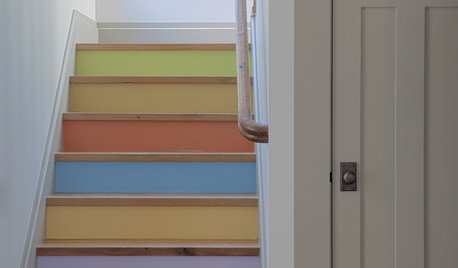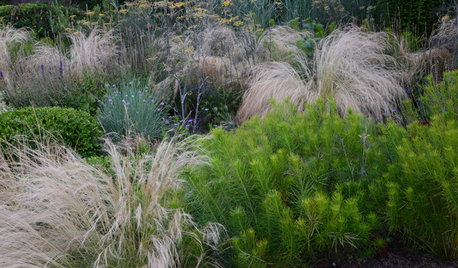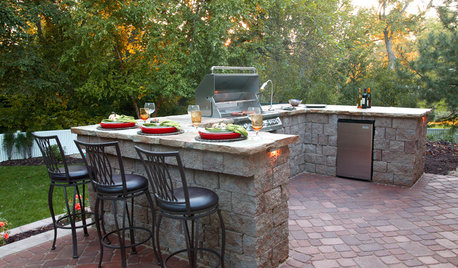Good morning - we were surprised with more rain overnight (just what I needed! ha!) and so went out to take a good look at the garden this morning. I'll come back and post pics tonight, but while it's fresh in my mind:
Onions - I see three bolting (likely from the roller coaster weather we've recently had) and three others are laying over like they may be getting ready to harvest, but those don't seem to have bulbed up much. Others are looking pretty good with about 10 leaves average. I didn't do much to feed them except one last-ditch effort of blue water, so I can't say I'm surprised. I will soon seed green beans in the onion patch, so will pull the few that have bolted and start seeding there.
Radishes - I apparently forgot I had radishes, and they have started flowering. Can I still eat these raw? I'd been delaying because, you know, you can only eat so many radishes at one time. I've only ever had raw radishes, but I bet they could be pickled or something if I ever had time.
Asparagus - the rains have encouraged more new growth, and some of the mature ferns have already shed berries, so am hoping the asparagus patch will grow for next year.
Cantaloupe - seems stalled. I think starting the seeds in the house early didn't really do anything for me, these haven't gotten much larger and the one eaten by a cutworm and reseeded is now just as big as the others grown inside.
Tomatoes - I've lost a few of these, even with my cutworm defense toothpicks, so will plant something else (maybe okra?) in their spots. Don't worry, I still have about 20 plants so if they ever get around to flowering and setting fruit, there will be plenty of tomatoes. :) Plants are healthy and about 18 inches tall, but no flowers yet. I fed with tomato tone at planting time, but thinking I will feed again to try to encourage some blooms unless y'all warn that will only encourage vegetation.
Cucumbers - two of four plant (beau) look great and have flowers and have begun vining. These were started inside early. The other two (beauty) started inside at the same time, have the same problem the cantaloupe does... stalling. Hope they get going soon.
Zucchini - can we call it stall-itis? The seedlings started inside sit there like a lump, and the few I had to reseed from cutworm damage are going gangbusters. I'm sure there's a lesson here, but I might be too hardheaded to remember it next year in the spring seed-starting frenzy.
Peppers - have been a buffet for some kind of chewing insect. Have rebounded somewhat, but I don't know what's eating the leaves or how to prevent it, so I'm letting them fend for themselves somewhat.
Eggplant - a double whammy of stalled-out and insect buffet. Hoping they might recover.
Garlic - the garlic patch consists of the ones I didn't find when I harvested last year, so I think that's why I have tons of scapes shooting now (in a cool, twisty curlicue way). I guess this means I won't get any bulbs.
Two/Three-year onion experiment - all of last year's onions (and one from the previous year that I had ignored) were transplanted to one spot and they have gone crazy flowering. The stems of the scapes are about 1.5 inches in diameter, they are crazy thick! Keeping an eye on the flowers to see when seeds start forming... although I have no idea why, except for pure scientific interest, as I spent maybe a whopping grand total of $5 on onions this year and I cannot imagine that I will ever get around to seeding these early enough to start them when they would be sized up at the time when Dixondale would ship...
Elephant garlic - may have fallen prey to an overzealous yard spray guy... that's what I get for leaving them outside of the main vegetable garden and its no-spray perimeter.
Strawberries - and impulse buy of everbearing strawberries at Lowe's has been planted in the front flower bed amongst the hydrangeas and the peonies. They are flowering and setting fruit.
Misc. herbs - the basil has been an insect snack, but all in all, these are doing OK in containers shared with cannas around the swimming pool. I should start some more things to replace those that died of neglect waiting to get into a pot, but I'm not sure I will.
Fruit & nut trees - peach tree is on its last leg, doubtful that this year's weather will allow fruit set. We'd trimmed lots of deadwood out of the plum tree this spring and it has rebounded quite well, it may live longer than I'd thought. Again, no sign of fruit there. Pear trees have lots of baby pears. One of the pear trees (we have 2.5 pear trees, the half comes from a neighbor's tree hanging into our yard) is set to be removed, and it's unfortunate because it makes Asian pears which are really tasty, but it's completely planted in the wrong spot and drops pears into the pool and clogs up the plumbing. My mother is sick about me wanting it out, but I think it has to go. Pecan tree hasn't shown any sign of pecans this year, but I'm hopeful. I think we unearthed a mulberry when we cleared one corner of our yard that was completely overgrown, but waiting to see if it makes any fruit. Blackberries were decimated in the weed/honeysuckle clearing, so I think those will have to be replanted - I'd hoped they would come back from the roots but no such luck yet.
Lastly, I've been begging my husband for a greenhouse/potting shed to replace the dilapidated 6x8 Harbor Freight version that the house came with. I've been analyzing how much space I'd want and what I'd use it for (overwinter tender plants like hibiscus and palms and citrus - to get those out of the garage so DH doesn't have to climb over the pots as he gets out of his car - and for seed starting, leaving it vacant in the summer I think) and where we might put it (best spot might actually be under the canopy of the pecan and pear trees, which will be bare in the winter, with the trees on the north side and our large paved driveway on the south side to reflect any sunlight/heat back at it.) I've got some ideas and have been haunting the Greenhouse forum for a while, so will keep y'all updated if we go forward! I've considered another HF (bigger) GH, but I think we've decided against it. The last one is not a resounding endorsement, even though there are many devotees in the GH forum. My current idea is to actually build it out using pairs of sliding glass patio doors with screens, and maybe give it a shingled roof instead of see-through. Kind of a sunroom/potting shed/greenhouse hybrid. Even my little HFGH, with only half of the panels intact and mostly open to the weather, gets severely overheated on sunny winter days, and positively baking in the summer, so I think being able to open the doors and cross vent might be a good idea. Still mulling it over.
Anyway, that's the news for now! And if you've stayed with me this long... wow. You must be an Oklahoma gardener - patience of a saint and perseverance of a pioneer. :)
Love to hear what's happening in your garden this week - feel free to pile on!

















elkwc
Okiedawn OK Zone 7
Related Professionals
Ashburn Landscape Architects & Landscape Designers · Salisbury Landscape Architects & Landscape Designers · South Orange Landscape Architects & Landscape Designers · Mercedes Landscape Contractors · Middleton Landscape Contractors · Northport Landscape Contractors · Setauket-East Setauket Landscape Contractors · Shirley Landscape Contractors · Baileys Crossroads Landscape Contractors · Ashburn Decks, Patios & Outdoor Enclosures · Baton Rouge Decks, Patios & Outdoor Enclosures · Blue Springs Decks, Patios & Outdoor Enclosures · Huntington Decks, Patios & Outdoor Enclosures · Marlboro Decks, Patios & Outdoor Enclosures · South Houston Decks, Patios & Outdoor Enclosuresslowpoke_gardener
elkwc
MiaOKCOriginal Author
slowpoke_gardener
nated
MiaOKCOriginal Author
Okiedawn OK Zone 7
luvncannin
p_mac
wbonesteel
slowpoke_gardener
slowpoke_gardener
wbonesteel
bettycbowen
luvncannin
MiaOKCOriginal Author
luvncannin
wbonesteel
osgw380
luvncannin
susanlynne48
Okiedawn OK Zone 7
bettycbowen
susanlynne48
luvncannin
Okiedawn OK Zone 7
Okiedawn OK Zone 7